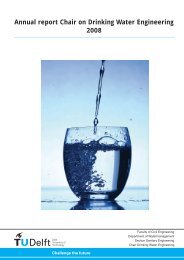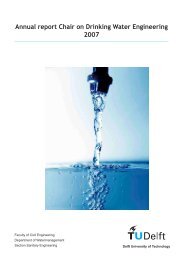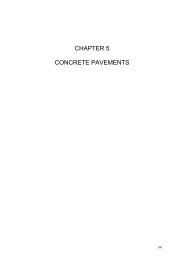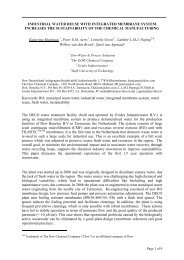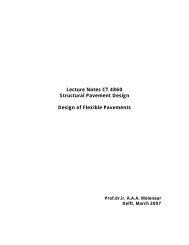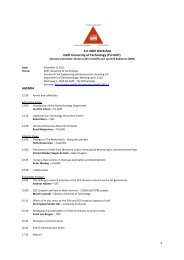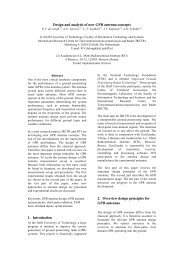CT4860 STRUCTURAL DESIGN OF PAVEMENTS
CT4860 STRUCTURAL DESIGN OF PAVEMENTS
CT4860 STRUCTURAL DESIGN OF PAVEMENTS
You also want an ePaper? Increase the reach of your titles
YUMPU automatically turns print PDFs into web optimized ePapers that Google loves.
In cold climates the sub-base may be within the frost penetration depth. In<br />
such cases the sub-base material should not be frost-susceptible.<br />
In case of a good quality subgrade (sand or better) a sub-base in concrete<br />
pavement structures may not be necessary.<br />
2.4 Base<br />
2.4.1 General<br />
For reasons of strength a base is not absolutely necessary in a concrete<br />
pavement structure because (similar to the subgrade and the sub-base) it has<br />
only a limited effect on the stresses in the concrete layer due to a traffic<br />
loading. However there are other reasons why in concrete pavement<br />
structures nowadays nearly always a base is applied, such as:<br />
- below the concrete top layer there has to be a layer with a high resistance<br />
to erosion, to ensure a good support of the concrete layer and to prevent<br />
‘pumping’ of fine material through joints and cracks;<br />
- by applying a base the deflection of the concrete pavement structure due<br />
to a traffic loading is considerably reduced, which is very favourable with<br />
respect to the long term pavement behaviour (especially the evenness<br />
around joints in plain concrete pavements);<br />
- the construction traffic and the construction equipment (slipformpaver) for<br />
the concrete layer require an even surface with sufficient bearing capacity;<br />
in general the sub-base and especially the subgrade can not fulfill these<br />
requirements.<br />
At each side of the road the base has to be at least 0.5 m wider than the<br />
concrete layer, to give sufficient support to the slipformpaver.<br />
To obtain an equal thickness of the concrete top layer, the surface of the base<br />
has to be rather even, for instance a maximum deviation of 15 mm over a<br />
distance of 3 m.<br />
In cold climates the base is within the frost penetration depth and therefore<br />
has to be frost-resistant.<br />
As base materials in concrete pavement structures especially unbound<br />
materials and cement-bound materials are applied.<br />
2.4.2 Unbound base<br />
An unbound base material has to fulfill the following requirements:<br />
- a good permeability to remove as soon as possible (to the sub-base or<br />
subgrade) the rainwater that entered the concrete pavement structure;<br />
- a good resistance to crushing to prevent frost-susceptibility and to prevent<br />
loss of support of the concrete top layer due to erosion;<br />
- a good resistance to permanent deformation to prevent as much as<br />
possible loss of support of the concrete top layer due to the repeated traffic<br />
loadings.<br />
6



